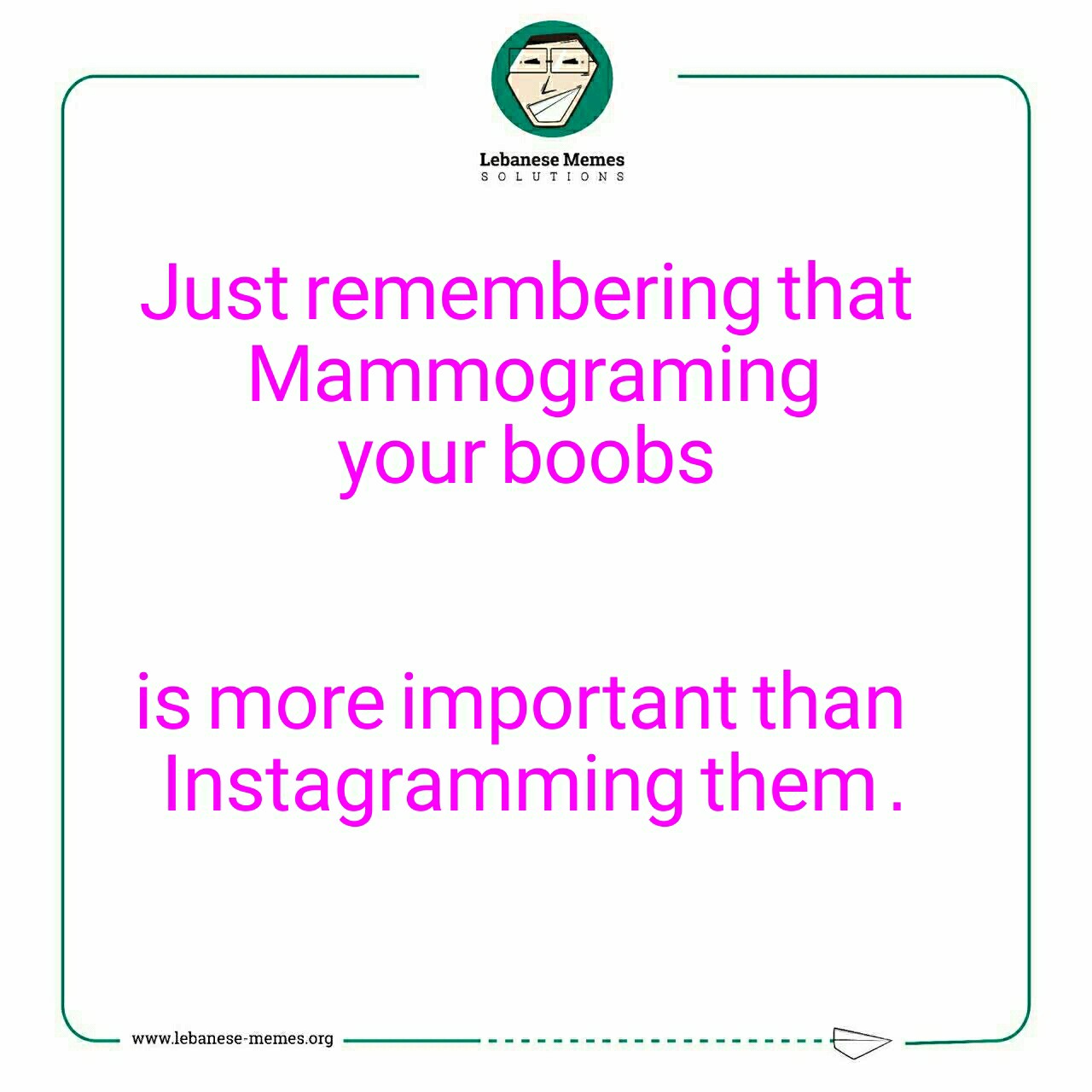Breast cancer awareness month is popular. Observed in October since 1985, it represents a time for people and organizations to draw and pay attention to what is the most common form of cancer affecting women in the U.S. In 2023 alone, the National Cancer Institute anticipates more than 300,000 new cases, higher than lung or prostate cancer.
The month is valuable to the cause. Each year it causes a significant spike in Google searches around the topic, aided at least in part by marketing campaigns and fundraising efforts. Perhaps its most effective methods for awareness creation are driven by social media, a place where people can participate in a community to create and share information.
Breast Cancer Memes

Source: Lebanese-memes.oorg, courtesy of Facebook.
As noted in the case study, Breast Cancer Meme, this is particularly evident in the use of memes to cause mobilization.
Defining Memes
After years of having only a vague understanding of memes, this study has drawn attention to my relative ignorance on the subject. According to HubSpot, a meme is “"quite simply a concept, behavior, or idea that spreads, usually via the internet." Often memes take the form of images or videos, though they can be other things too, like a phrase or hashtag. In the same article, the value of memes includes:
Successful (or at least viral) Breast Cancer Awareness Memes
In the same case study referenced above, viral memes are examined. All were provocative: by their opaque nature they encouraged conversation and inquiry. The first encouraged women to update their social media status using their name, followed by the color of the bra they were wearing, so that one might say, “Amy, blue.”
The next was more provocative still, and prompted women to figure out how long it took them to “do [their] hair” and change their status to that number, followed by the word “inches.” So, one’s status might say, “10 inches. Finally, a challenge was issued in which women were to change their status to note where they preferred to leave their purse. In this case, a woman’s status might be, “I like it on the floor.”
Do Breast Cancer Awareness Memes Get Results?
As mentioned at the start of this post, breast cancer awareness month is well known. In fact, awareness in general feels high and not limited to October. During the course of a normal day, one might see pink ribbons on license plates, t-shirts, lawn signs, or bumper stickers.

Image created with Canva Pro.
To consider whether the memes mentioned in our case study were effective, one must first ask how success is measured. Different marketing campaigns have different associated goals, and these may include causing engagement, increasing brand value, or increasing revenue.
It is easy to conclude that the memes created awareness around breast cancer month - they were viral after all - but was creating additional awareness a worthy objective when the cause was widely known in the first place?
Popular, but Lacking in Value
Some argue that these memes were fun, got people talking, and increased awareness, but they didn’t do much to support the cause in its entirety. According to Lifespan, breast cancer awareness month’s purpose is to “to help raise awareness of breast cancer, educate the public about its symptoms and prevention, and fund research into its causes, treatment, and cure.”
... little in the way [of] monetary donations or useful information.
- Jen Wieczner, Marie Claire
So, one might conclude the memes accomplished part one of the month’s purpose, but probably didn’t do much to educate the public or fund research. Jen Wieczner, writing for Marie Claire in 2010, agreed, noting the memes cause “little in the way [of] monetary donations or useful information.”
Risa Kerslake went a step further in 2015, noting that these memes, pink ribbons, catchy t-shirts and the like lend a false sense of glamor and sexuality to a deadly serious subject. Instead of just spreading a mysterious, provocative meme, perhaps we’d be better worrying less about awareness of the month, and more about connecting it to prevention education and support of those in need.
Social media, with its power of community and mobilization, is well-suited to do just that.
Note: Featured image licensed from Adobe Stock.
What do you think? Let us know in the comments section below.
